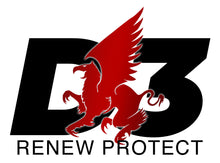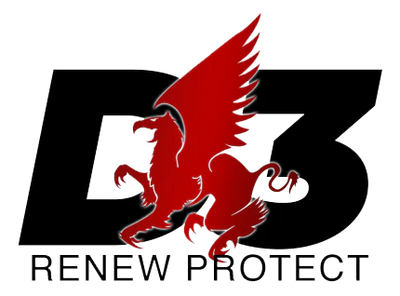Videos & Frequently Asked Questions
Q: Why we do not list our business contact number on Contact page.
A: We receive multiple scammers calling every hour! Let's try it here, 828-528-2902.
Q: What is the highest shine product?
A: For an extreme shine we recommend BLAK as a base treatment followed with one coat of GLOZ. This will provide maximum shine and outstanding protective qualities. Another option is to simply use two coats of GLOZ. A note on usage amounts: a typical first treatment on four tires will require around 1.5 ounces with future coats being only an ounce. Trim will need about an ounce per year or two years.
Q: How do I apply the acrylic polymer-based products: BLAK, GLOZ, and DASH?
A: The directions on the bottle or instruction card are all you will need. Make sure the surface is completely free of any previously used 'protectants' . . . that greasy stuff! New or silicone-coated (protectants) tires will need 2-4 weeks of drive time and a few cleanings to 'push' get all of the silicone, waxes, solvents, etc. off and out of the sidewall. Typical protectants all contain these elements and this will act as a barrier to the covalent bonding process. If residue is present when applying, you will see streaking, white-looking haze areas where polymers bonded imperfectly to the surface.
Beyond this important first step, simply wipe our products onto a cool and clean surface.
Q: What is the difference between BLAK, SATN, and GLOZ?
A: Just as the names suggest:
BLAK = Medium gloss for rich black/dark gray color restoration
SATN = Low gloss that will enhance ANY color surface
GLOZ = High gloss that will enhance ANY color surface
Each have the same polymer-ceramic hybrid structure. BLAK is the choice for strongly faded black surfaces, and holds one advantage over GLOZ in that it contains a high level of the UV absorber carbon black. BLAK can be used as a base coat followed with GLOZ or SATN to intensify the look, shine, and protective abilities. Each individual product can also be layered for a similar effect. Both have multiple UV-blocking aspects and offer very similar qualities of UV inhibitors which help maintain polymer properties and integrity by limiting polymer degradation in exposure environments.
Q: How do I restore and protect smooth/shiny plastics?
A: At our shop, we often do not use GLOZ, SATN, or BLAK on smooth plastics like mirror casing, front grills. Smooth plastic will often look great by buffing with a strong polish or medium compound.
GLOZ, SATN, and BLAK will also work well on smooth plastics and is the 'easy option'. Just apply light coats to a cool surface.
Q: What should I use on my white-wall tires?
Definitely use SATN or GLOZ which will seal the entire sidewall surface with no discoloration on the white areas.
Q: Do your products hold up against dirt roads, mud, and sand?
Because GLOZ, SATN, and BLAK provide a completely dry seal that fills in imperfections in surfaces, dirt and dust don't stick like they would on a typical greasy tire shine that others sell. The surface stays protected, and contaminants wash off easily.
Q: Are BLAK, SATN, and GLOZ safe for motorcycles and golf carts?
A: YES! They offer a totally safe dry seal that will actually improve the feel and slip-resistance of weathered rubber, plastic, and vinyl. Many customers even apply them to the tire face or tread for seasonal storage of tires.
Q: What is the best way to maintain the BLAK, SATN, or GLOZ treatment?
A: We do not recommend high pH (strong) tire and wheel cleaners after application of BLAK, SATN or GLOZ. You just will not need them. Low pH car wash soap and a sponge or soft-tip brush will be fine for regular cleanings. If you're finding it necessary to use a wheel cleaner for the rims, you may want to polish the rims and seal with a ceramic product like RP.11 similar. This will inhibit contaminants from bonding and make cleaning very easy.
Q: What is the best way to maintain the DASH treatment?
A: Easy answer: water and a microfiber towel is all you will need!
Q: White haze or imperfections after application?
Q: What's the best way to remove BLAK, SATN, or GLOZ?
A: If the treatment is fresh and hasn't dried and cured yet, just use a damp towel to wipe off the excess. If you have an area of overlap or product that is dry, you can use a small amount of PREP or ammonia with water and microfiber towel. These products will quickly break the polymer bonds and allow for easy removal.
If you want to strip the surface to completely renew the treatment on your tires, simply give the tires a wash with tire cleaner and/or PREP or 20% ammonia mixed into a general cleaner or water.
Q: How strong are the D3 | RENEW PROTECT ceramics?
A: They are the real deal and water based for ease of use. We now infuse ALL our products with our two ceramic blends. Our hybrid blends consist of titanium and quartz. They are easy to wipe on ceramics with one year or better longevity.
Beware of 'cheap' products claiming to be ceramic. They are not. Most are actually chemicals called polysiloxanes, i.e. a stronger version of Armor-All or 303-type products.
It is important to note that ceramics should only be applied to well-prepared and cleaned substrates. Applying ceramics over a wax or polish will greatly lessen the longevity of that ceramic.
Q: Do you have any advice on applying DASH?
A: DASH is designed specifically for interior applications. It will make a permanent UV-blocking dry seal. It is very important to properly prep and clean the surface before you apply DASH. If the interior has received 'protectant'-type treatments more once a year, it may be best not to use DASH. The surface must be free of these silicones, oils, and solvents. Typical protectants all contain these elements and this will act as a barrier to the DASH inner bonding process. If residue is present when applying DASH, you will see white-looking haze areas where polymers bonded imperfectly to the surface.
Q: What is the best way to prep and remove other protectants?
A: Just do the following:
Interior: This may require multiple cleanings with our PREP and/or window cleaner or isopropyl alcohol. Always try a small test area first because these products could possible damage surfaces or remove lettering. If you have use 'protectants' repeatedly on interior surfaces then we DO NOT RECOMMEND using DASH. In this case the interior plastics and vinyl will be saturated with silicone and solvents which will block a proper bonding of the DASH.
Exterior: You can simply give it a good wash and wait a couple of weeks. Typical protectants are designed to fail quickly.
Many have asked about 'stripping' previous protectant with use of petroleum distillates. This is not a good idea and could worsen the surface prep and damage plastics. With tires the volatile chemicals will pull the embedded synthetic wax to the surface. These waxes will act as a barrier and prevent RENEW PROTECT from forming a covalent bond into the substrate.
Q: Why is applying typical 'protectants' a bad idea?
A: Well, how to keep this brief . . . so-called 'protectants' including the newer cheap 'ceramics' are mainly water, glycol (antifreeze), silicone and/or polysiloxane. To make this combo work requires emulsification. Silica has UV reflective values and is harmless. It's the emulsifier(s) and the glycol that are the bad bits!
Glycol is used to maintain hydration and keep the surface looking 'wet and shiny'. That tire or faded trim looks great when it rains . . . right? That's what most protectants do, they temporarily hydrate the surface. Glycol is also neurotoxin, so it's a bad idea to use on interiors. These emulsifiers will eventually break down any surface.
For more details, see our blog post: Protection, Protectants, and Tire Dry Rot

